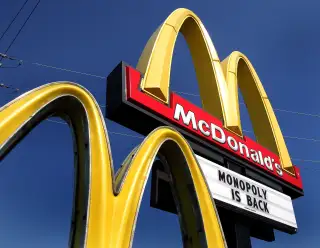No, Poor People Do Not Eat More Fast Food

It's common knowledge that fast food consumption is higher among people in poverty. Only, that's completely wrong.
A new study from the CDC released this month adds to a growing pile of evidences that dispels a widely-held notions about who eats restaurant fast food. This time, it focuses on kids and adolescent consumption.
The CDC's study found no correlation between fast-food intake and poverty status. (Ditto for sex, or even weight. Remember, there are other ways beside a fast-food restaurant to load up on calories.) In 2011 and 2012, on about a third of adolescents and children consumed fast food on a given day.
Children in the poorest group, from families earning less than 130% of the federal poverty level (currently about $26,000 for a family of three), get 11.5% of their calories from fast food, compared with about 13% for richer kids. The difference is not statistically significant, according to the CDC.
This study may have been about young people specifically, but in 2013, a Gallup poll found that adults making over $75,000 ate fast food more frequently than other groups and people making under $25,000 are one of the least likely.
Another study, done by a U.C. Davis researcher a few years ago, debunked the alleged marriage of the poor and McDonald's, finding that the rich actually consume more fast food than poor people. The lead author noted that this shouldn't actually have been a surprise, considering that fast food is marketed towards the middle class families.
Also, fast food is still eating out and not necessarily cheaper than cooking. It's a convenience middle-class families can more easily pay for.